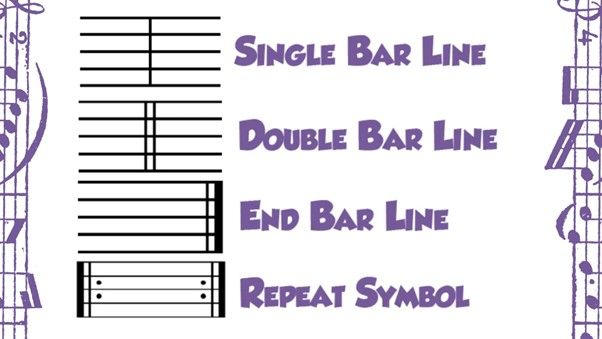The Basic Music Punctuation Guide
So, when you hear a song, you might not consider the music on paper; just as sentences make use of marks to divide them, music does the same thing with this kind of punctuation called "bars." Bars are, of course, an important element in the formation of flow, rhythm, and composition in music. So, what exactly is the bar in music? Let's do some digging and see what the importance of bars is, why they matter, and how they keep a musician on a beat.

What is a bar in music?
A bar in music is literally a measure of time in which a particular number of beats is contained, established by the time signature in the song. A bar can be thought of as a container for beats. The standard time signature should be given as 4/4, meaning that there are four beats in one bar. Music can then be split into intelligible parts just like a sentence in writing is segmented by commas and periods.
Why Bars Matter
Imagine listening to a song in a totally senseless order-it would be disorganized. The existence of bars within the music has enabled the musicians to follow one specific rhythm and even be directed on where particular beats and notes come in. If bars were not present, coordinating musicians would really be complicated because there is no point of comparison for timeliness.

Understanding Bars in Music
Bars across genres are a universal concept, whether a listener is admiring a Mozart symphony or a hip-hop beat: bars in music are building blocks that form the structure to make everything nice and tidy. Most songs consist of repeated bars that are in the same rhythmic pattern.
Elements of a bar
To understand better what a bar in music is, one must know what it consists of: Beats: The steady pulsing you can hear while listening to a tune. Notes: Symbols of musical sounds, placed in each bar. Time signature: A fraction-like symbol that indicates how many beats are in each bar and the type of note which is the beat. For instance, in 4/4 time, there are four beats in the measure, and each quarter note represents one of the four beats. Where the feel or rhythm of a song is conceived is within the arrangement of these notes across each measure.

What Are Bars of Music: A Deep Dive
What are bars of music exactly, and how do they differ from the rest of musical notation? Bars are pretty simple yet vital. They are something like a map which would guide the musicians in knowing exactly in what rhythm and flow to perform a piece. Well, as we said, bars divide the music into sections, making it easier for the timekeeping and consistency during the performance.
Connection of the Bars with the Time Signatures When learning what is a bar in music, you’ll quickly notice that the concept of a time signature goes hand in hand with bars. A time signature like 3/4, for example, means that each bar consists of three beats, and each beat is represented by a quarter note. This helps musicians count and stay on track, whether they’re playing alone or in an orchestra.
How to Read Bar Lines: The Musician's Guide They are called "bar lines" and divide each horizontal line on the music staff into a bar. These lines mark where a bar is starting and where it is ending, and that allows to recognize the rhythm. Listening for these lines while reading music will help because they act as musical punctuation, signalling that a new phrase or pattern is coming.

Break it down like this: Single Bar Line: Separates two bars. Double Bar Line Marks the end of a section. Final Bar Line: Indicates the conclusion of the entire piece.
Once you can read bar lines, you will find that rhythm will become much clearer. They're used like a bookmark, but they must be on the same page as the rest of the ensemble.
Key Points to Remember Bar lines usually divide the music into equal parts. They assist musicians to know where they are in a song. A missing bar line could throw the whole performance off.
Bar of Music: A Simple Tool with Complex Applications Even though a bar in music seems to be an easy division, its applications are quite large. It aids the musicians by: Maintain a consistent rhythm.
Change between various sections of a song. Know where to accentuate certain notes or beats.
For example, a musician will use the structure of the bars in music to know when to introduce fills, where to keep the beat, and when to drop out for effect.
Syncing with other musicians
And sometimes one wonders how vast orchestras keep themselves in perfect rhythm. The fact is, it's even in the bar of music! Conductors use these to lead their ensemble so that all instruments will come together harmoniously. This works out the same for bands, singers, and even DJs creating mixes; it's a bar structure that ties everything together.

What Are Music Bars of Other Genres?
Although the bars function more or less uniformly, genres use them in very different ways. For instance: Classical Music: Bars help break down complex compositions into manageable parts for musicians. Jazz: Improvisation often plays with the bar structure in an apparently more spontaneous way than it in fact is. Hip-Hop: The unit of measurement of the rappers for their verses is given in bars. The idiomatic expression for delivering well-structured lines with respect to the music given is coined by the phrase "spitting bars". No matter the genre, however, bars within music are a more crucial tool for creating flow and structure.
Bars in Music: Wrapping It All Up
Bars help organize music and keep musicians on track. Reading the bar lines properly ensures that the musicians understand the rhythm and structure of a particular piece. Bars are used across all genres to create structure and rhythm, from classical to hip-hop. In and of itself, a bar might seem a small if even tiny component of the theory behind music.
When it comes to organizing and creating music, bars can be the real-deal deal. Whether one is playing an instrument, writing a song, or just interested in the structure of favorite tracks, it certainly goes much deeper when explaining what a bar in music is. The next time you listen to that music, you will love so much how bars keep everything in harmony.



